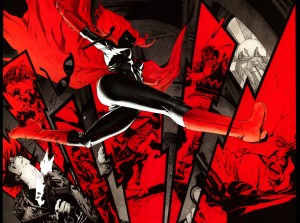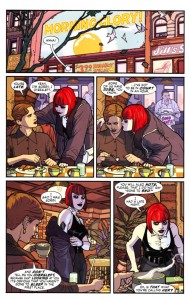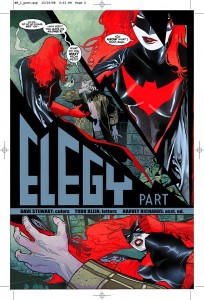I love monsters, especially the lost, lovelorn, and lonely kind — the afflicted Wolf Man; the misguided Creature from the Black Lagoon; Frankenstein’s tragic monster; even Jeff Goldblum’s suffering Brundle-Fly… Always on the lookout for new monsters, or new takes on existing archetypes and characters, I was delighted to stumble across “The Mad Scientist’s Daughter” by Theodora Goss. Concerning a group of women with infamous fathers, it’s dark but funny, grim and sweet all at once.
Archive for the ‘Inspiration’ Category
I’m a sucker for second-, third-, and tenth-tier superheroes, so it was like Christmas came early last night when I opened my e-mail and found a piece from my buddy Michael Stribling of the Phantom, one of the most underrated pulp heroes. It’s awesome! I especially dig the background.
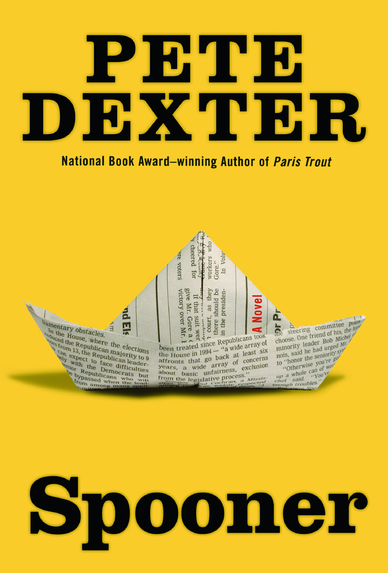 “They make it look effortless.” It’s how we describe the best athletes and actors. Reading anything by Pete Dexter is at once disheartening and inspiring because he makes writing seem effortless. I first read Paris Trout nearly 20 years ago, and tonight I just finished Spooner, having read everything else Dexter in-between, and in the process becoming convinced that he’s the greatest living American novelist, perhaps Mark Twain reincarnated somewhere in Philadelphia. Spooner feels like a continuation of Deadwood (Dexter’s Wild Bill novel) in that both are studies of complicated but understated relationships between men, poignant without being sentimental, and incredibly funny without ever becoming mean-spirited. An early passage, describing the title character’s difficult birth, which coincides with a fire at an old folks’ home across the street:
“They make it look effortless.” It’s how we describe the best athletes and actors. Reading anything by Pete Dexter is at once disheartening and inspiring because he makes writing seem effortless. I first read Paris Trout nearly 20 years ago, and tonight I just finished Spooner, having read everything else Dexter in-between, and in the process becoming convinced that he’s the greatest living American novelist, perhaps Mark Twain reincarnated somewhere in Philadelphia. Spooner feels like a continuation of Deadwood (Dexter’s Wild Bill novel) in that both are studies of complicated but understated relationships between men, poignant without being sentimental, and incredibly funny without ever becoming mean-spirited. An early passage, describing the title character’s difficult birth, which coincides with a fire at an old folks’ home across the street:
“It’s a stalemate, then, the first of thousands Spooner will negotiate with the outside world, yet even as visions of stillborn livestock and dead mares percolate like a growling stomach through the tiny band of spectators, and Dr. Woods discreetly leaves the room to refortify from the locked middle drawer of his office desk, and Lily’s sisters, who, sniffing tragedy, have assembled from as far off as Omaha, Nebraska, but are at this moment huddled together at the hallway window to have a smoke and watch for jumpers across the street, Spooner’s mother rolls out of the bed on her own and gains her feet, and in those first vertical moments, with one of her hands clutching a visitor’s chair for balance and the other covering her mouth against the possibility of unpleasant morning breath, she issues Spooner, feet first and the color of an eggplant, the umbilical cord looped around his neck, like a bare little man dropped through the gallows on his way to the next world.”
I picked up Detective Comics #854, the first to feature Batwoman and artist J.H. Williams III. I was totally blown away – from panel design to lighting, it’s some of the best work in recent memory, and certainly one of the strongest books in DC’s current lineup. Perhaps most impressive is the way Jim flows between two very distinct styles depending on who is taking center stage – Batwoman or her alter-ego. It’s almost like getting two artists for the price of one, but there’s enough consistency and cohesion between the two styles that it’s never jarring.
I recently had the privilege of writing a short “Ask the Expert” <looks over shoulder> piece for Storylink. While you’re there, be sure to read the more insightful Q&A with Simon Kinberg, screenwriter for X-Men: Last Stand, Jumper, Mr. & Mrs. Smith, and the upcoming Sherlock Holmes flick. His writing process is especially interesting, but my favorite quote covers the heart of story:
I really believe all good stories start from the same place: interesting characters in an emotionally charged situation. For me, the difference between drama and genre is this: in dramas, you have relatable characters in a relatable situation, whereas in genre films you have relatable characters in an unrelatable situation (fighting ghosts or robots or giant sharks, etc…). But you have to relate to the characters.
And then read the interview with non-stop Jimmy Palmiotti!
“It’s as simple as having a planet of fire … and you want to keep the characters from burning.”
There’s an interview with Alex Kurtzman and Roberto Orci, who wrote Transformers and the recent Star Trek reboot (along with a ton of other stuff), over at Storylink. One bit of advice I’d pull out and add to the techniques for unwrapping the dead fish:
Here’s one trick we use sometimes with writers block. You can get so critical of yourself, thinking you have to write the scene perfectly the first time, but actually you don’t. You are going to write it many times… Sometimes it’s a fun mental exercise when you are stuck to actually try and write the worst version of a scene you can think of. That way, it takes the critic off your shoulder and … you get something down on paper. Then you can go back and make it better and better.
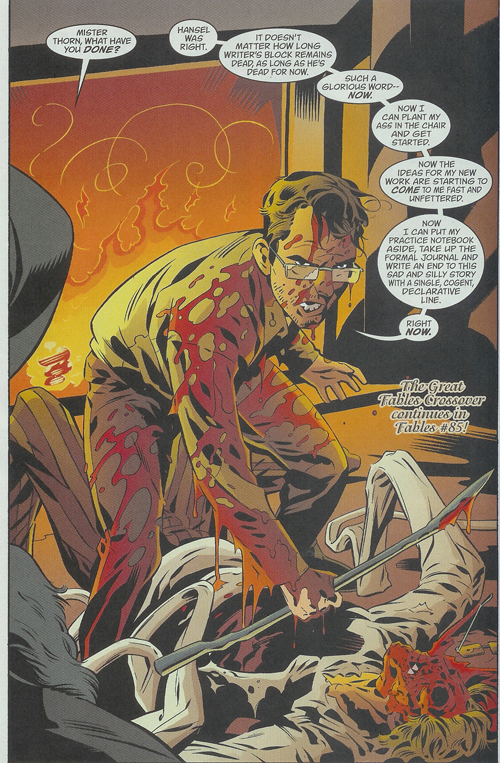
Something to hang on your wall: A page from The Literals #2, part of the "Great Fables Crossover," which is a spin-off of the always-excellent Fables by Bill Willingham...


